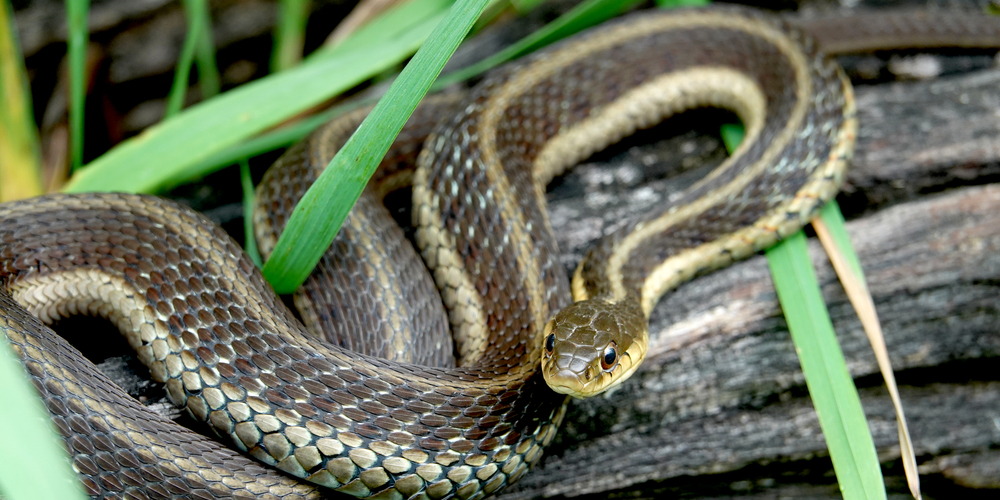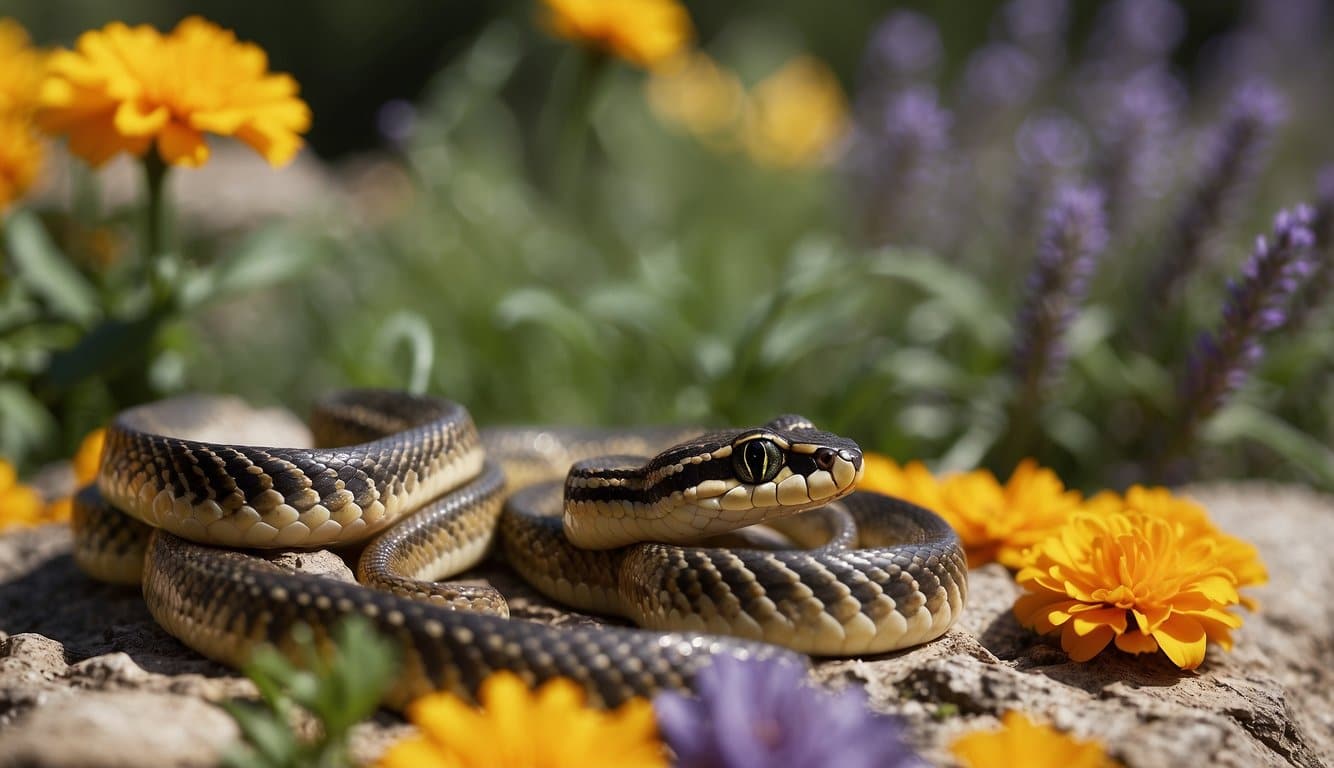Garter snakes are commonly found across many parts of North America, and questions about their potential danger are frequent. Here’s a table addressing whether garter snakes are dangerous:
| Question | Are Garter Snakes Dangerous? |
|---|---|
| Answer | No, Generally Harmless |
| More Info | Garter snakes are non-venomous and are generally considered harmless to humans. Key points include: |
- Mildly Toxic: Some garter snakes produce a mild neurotoxic venom, but it is not harmful to humans. The venom is delivered through chewing, and because their fangs are located at the back of their jaws, it is rarely injected into humans.
- Defense Mechanisms: Garter snakes may release a foul-smelling musk or feign death when threatened. They can also bite if provoked, but their bites are typically harmless and only cause minor irritation or swelling.
- Beneficial Predators: Garter snakes are beneficial to gardens and farms as they help control pest populations, such as insects and rodents.
Garter snakes are more of a benefit to the ecosystem than a danger to people. They should be respected and left undisturbed if encountered in the wild.
Garter Snake Identification
When you encounter a slender, stripe-adorned snake, chances are you’ve found a garter snake. To confirm your discovery, look for these key characteristics:
- Size: Most species fall between 2 and 3 feet in length.
- Coloration: They exhibit a variety of colors, but dark bodies with longitudinal stripes in yellow, red, or white are distinctive.
- Head: A garter snake’s head is slightly wider than its neck, yet not as pronounced as in some other snake varieties.
Here’s a quick reference guide to help with identification:
| Body Feature | Characteristic |
|---|---|
| Size | Typically 2-3 feet |
| Body Color | Dark with stripes |
| Stripe Color | Yellow, Red, White |
| Head | Subtly wider than neck |
Habitat plays a role in spotting these snakes. They’re commonly found:
- Near water sources: Lakes, ponds, and streams are favored.
- In varied terrains: From grasslands to woodlands, your local garter snake adapts.
Remember, garter snakes exhibit regional color variations. If you’re unsure about a snake’s identity, observe the behavior and markings from a safe distance.
Garter snakes are known for their distinct striping patterns, which can be a clear giveaway to the trained eye. Keep in mind that while most garter snakes have stripes, there are variations in appearance depending on the species and location.
Habitat and Behavior
Garter snakes are non-venomous, making them harmless to humans, but they play an important role in their ecosystems, especially in controlling pest populations.
Preferred Habitat
- Location Variety: You can find garter snakes across North America, from moist environments to arid areas, but they show a preference for habitats near waterways.
- Shelter Needs: They typically seek out places with ample cover, such as tall grasses, rocks, and debris, to protect themselves from predators.
Diet and Hunting
- Varied Diet: Your garter snake’s diet mainly consists of amphibians and earthworms, with occasional meals of insects. Some species are particularly fond of frogs.
- Hunting Tactics: They are active hunters, using their keen sense of smell to track prey and quickly catching them with a swift strike.
Reproduction and Lifespan
- Breeding Season: Garter snakes typically breed in early spring, right after emerging from hibernation.
- Birth Mode: Unlike many reptiles, garter snakes give live birth to their young in late summer. A single litter can have as many as 40 snakelets.
They Have Venom, But It’s Nothing to Us Humans
Garter snakes possess mild venom and are not considered a significant threat to humans, but it’s important to understand their bite’s potential effects and the appropriate response should you or a pet be bitten.
Venom Toxicity
Garter snakes are mildly venomous, secreting a neurotoxin that is not lethal to humans. Their venom is more of a concern for their prey, such as amphibians or small rodents, rather than a fully-grown person or larger pets.
If you’re curious about pet safety in encounters with garter snakes, rest assured that they are generally not dangerous to cats or dogs, although individual reactions may vary.
Bite Symptoms and Treatment
When a garter snake bites, you might notice:
- Minor Symptoms:
- Localized swelling
- Redness and itchiness at the bite site
To treat a garter snake bite, you should:
- Clean the wound immediately with soap and water to prevent infection.
- Monitor for allergic reactions; although rare, some individuals may be more sensitive to the venom.
- Seek medical attention if symptoms escalate or if you have concerns about the bite.
Conservation Status
When you’re considering how dangerous garter snakes might be, you may also wonder about their place in the ecosystem and whether they’re at risk. Here’s what you should know about the conservation status of garter snakes:
- Not at Risk: Generally, garter snakes are in a stable condition. They are not listed as endangered or threatened on a large scale. This is due in part to their adaptability and ability to thrive in diverse environments.
- Variable by Location: While garter snakes as a whole are common, local populations may face specific threats. Habitat destruction and environmental pollution can put certain populations at risk.
- Protection Measures: Some areas have taken steps to protect garter snakes, especially where populations are vulnerable. Your region may have specific guidelines or legislation geared towards the conservation of local wildlife, including garter snakes.
- Role in Ecosystem: Garter snakes serve an important part in controlling pest populations. They eat a variety of creatures, including slugs, insects, and small rodents, which makes them beneficial to have around.
Here is a key fact: Garter snakes can be indirectly affected by the use of pesticides and other chemicals that harm their food sources. Thus, supporting conservation efforts can help maintain the balance in your local ecosystem and ensure garter snakes remain a part of it.
Interactions with Humans
When you encounter garter snakes, you may wonder if these slender reptiles pose any threat. Fortunately, your interactions with garter snakes can be quite benign as they are not considered dangerous to humans. Here are some facts to consider when you come across these creatures:
- Bite Reactions: Garter snakes have small teeth and their bite is typically harmless. You might experience minor symptoms such as slight swelling and itching, but these are not cause for major concern.
- Venom: They possess a mild venom which is not potent enough to harm humans, making them fascinating rather than feared.
- Pet Considerations: If you have pets, note that while garter snakes are not typically a threat, pets could harm the snake or may have allergic reactions to bites.
- Approach with Respect: Always respect a garter snake’s space. If you wish to observe or handle them, proceed with caution to avoid stress to the animal.
- Allergic Reactions: In rare instances, some people may have allergic reactions to garter snake bites. If significant discomfort occurs, it’s prudent to seek medical advice.
Frequently Asked Questions
In addressing common concerns about garter snakes, it’s important to have accurate information. These questions cover the crucial aspects of garter snake encounters and the implications for humans and pets.
Can garter snake venom be harmful to humans?
Garter snakes are known to have a mild venom which is not considered dangerous to humans. This venom is used mainly to subdue their prey rather than for defense against predators.
What should one do if bitten by a garter snake?
If you are bitten by a garter snake, you should clean the wound with soap and water to minimize the risk of infection. If an allergic reaction occurs, seeking medical attention is advised.
Are there risks associated with garter snakes and pets?
Pets may sometimes be bitten when they encounter garter snakes. While the venom is not typically harmful to humans, it can cause a reaction in some animals. Monitoring your pet for any signs of distress is prudent.
How do garter snakes behave when threatened?
When feeling threatened, garter snakes may resort to a defensive behavior such as hissing, striking, or secreting a foul-smelling musk to deter predators or perceived threats.
What are the implications of having garter snakes in a residential yard?
Garter snakes in your yard can actually be beneficial as they help control pests like insects and rodents. However, one should be mindful of potential encounters where the snake could feel threatened.
Why is it generally advised against handling garter snakes?
It is generally advisable to avoid handling garter snakes because they can become stressed, which may lead to biting or secretion of musk.
Additionally, human skin oils can harm the snakes’ delicate skin.
Last update on 2024-05-03 / Affiliate links / Images from Amazon Product Advertising API




